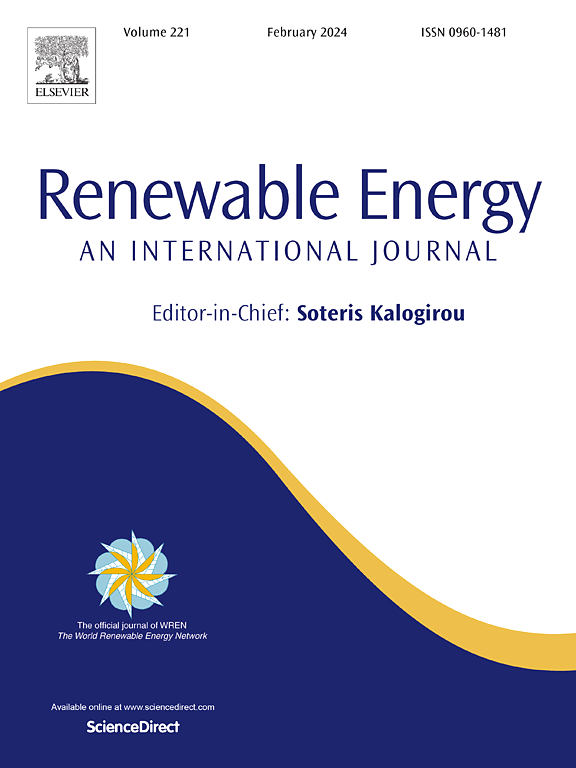Optimising suction bucket foundation installation for offshore renewable energy infrastructure through field data on self-weight penetration
IF 9
1区 工程技术
Q1 ENERGY & FUELS
引用次数: 0
Abstract
In recent years, the suction bucket foundation (SBF) has emerged as a preferred option for offshore wind turbines. However, accurately predicting penetration resistance remains a critical challenge, essential for determining self-weight penetration depth and the required suction during installation. Typically, SBF installation comprises two phases: the self-weight penetration phase and the suction-assisted installation phase. The current cone penetration test (CPT)-based prediction method primarily focuses on the suction installation phase, utilising only one set of design parameters (i.e. kp and kf). As a result, design parameters are typically calibrated against available installation data to achieve agreement for the suction installation phase, overlooking discrepancies in the predicted self-weight installation phase. The accuracy of predicted self-weight penetration significantly influences the evaluation of lifting crane operation, safety, the magnitude of suction pressure, and tilt of the suction bucket foundation system. This study addresses the reasons for these discrepancies and identifies shortcomings in the current CPT method. It introduces a new set of design parameters for evaluating the self-weight penetration phase, incorporating soil classification and distinguishing between the self-weight penetration (SWP) and suction penetration phases. Leveraging data from 35 SBF field installation sites in the South China Sea, back calculations are conducted to propose design parameters for SWP depth evaluation. The study underscores the importance of considering SBF installation in two distinct phases, providing fresh insights for enhanced design guidance, and highlights the economic and technical advancements in design practice with the new set of design parameters for SWP.
求助全文
约1分钟内获得全文
求助全文
来源期刊

Renewable Energy
工程技术-能源与燃料
CiteScore
18.40
自引率
9.20%
发文量
1955
审稿时长
6.6 months
期刊介绍:
Renewable Energy journal is dedicated to advancing knowledge and disseminating insights on various topics and technologies within renewable energy systems and components. Our mission is to support researchers, engineers, economists, manufacturers, NGOs, associations, and societies in staying updated on new developments in their respective fields and applying alternative energy solutions to current practices.
As an international, multidisciplinary journal in renewable energy engineering and research, we strive to be a premier peer-reviewed platform and a trusted source of original research and reviews in the field of renewable energy. Join us in our endeavor to drive innovation and progress in sustainable energy solutions.
 求助内容:
求助内容: 应助结果提醒方式:
应助结果提醒方式:


